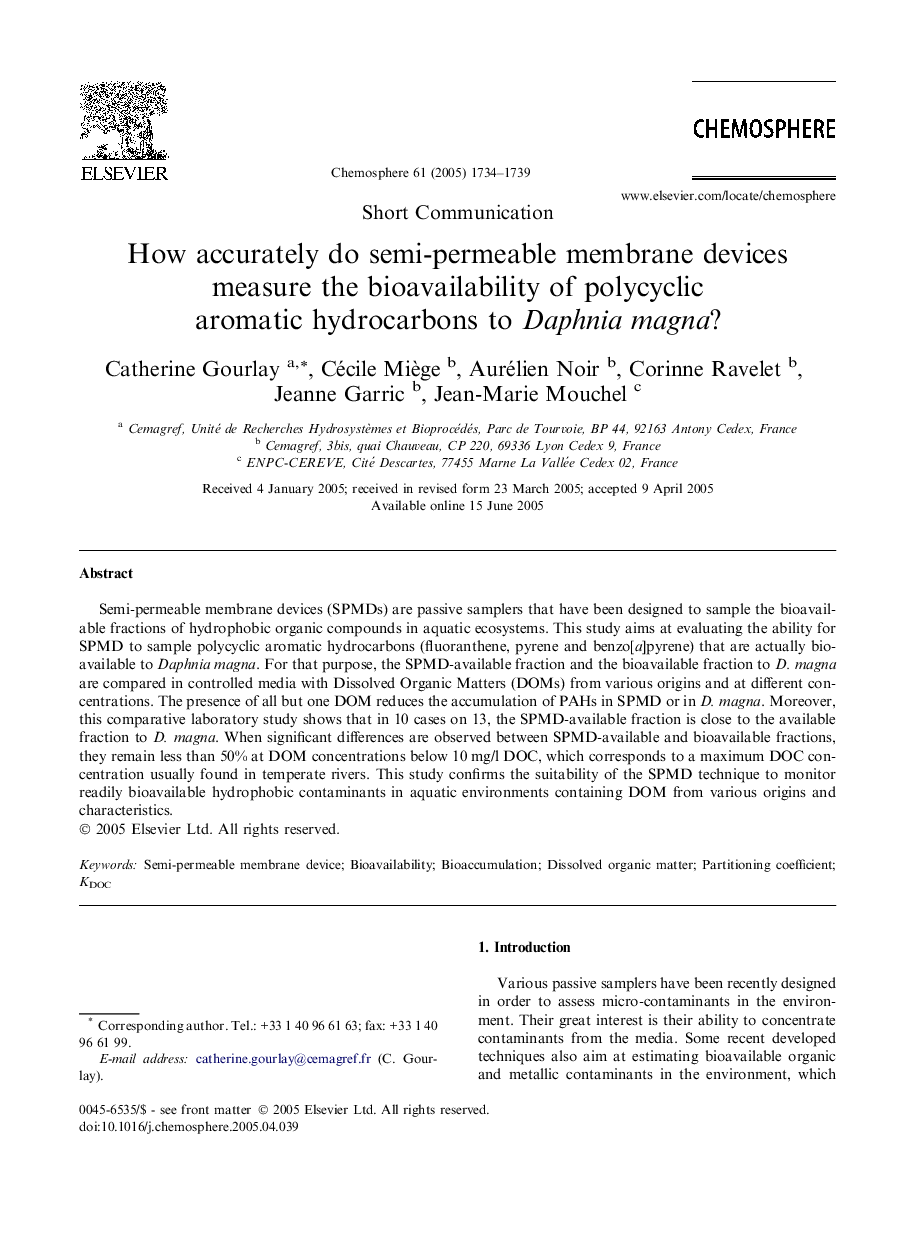| Article ID | Journal | Published Year | Pages | File Type |
|---|---|---|---|---|
| 9451515 | Chemosphere | 2005 | 6 Pages |
Abstract
Semi-permeable membrane devices (SPMDs) are passive samplers that have been designed to sample the bioavailable fractions of hydrophobic organic compounds in aquatic ecosystems. This study aims at evaluating the ability for SPMD to sample polycyclic aromatic hydrocarbons (fluoranthene, pyrene and benzo[a]pyrene) that are actually bioavailable to Daphnia magna. For that purpose, the SPMD-available fraction and the bioavailable fraction to D. magna are compared in controlled media with Dissolved Organic Matters (DOMs) from various origins and at different concentrations. The presence of all but one DOM reduces the accumulation of PAHs in SPMD or in D. magna. Moreover, this comparative laboratory study shows that in 10 cases on 13, the SPMD-available fraction is close to the available fraction to D. magna. When significant differences are observed between SPMD-available and bioavailable fractions, they remain less than 50% at DOM concentrations below 10Â mg/l DOC, which corresponds to a maximum DOC concentration usually found in temperate rivers. This study confirms the suitability of the SPMD technique to monitor readily bioavailable hydrophobic contaminants in aquatic environments containing DOM from various origins and characteristics.
Keywords
Related Topics
Life Sciences
Environmental Science
Environmental Chemistry
Authors
Catherine Gourlay, Cécile Miège, Aurélien Noir, Corinne Ravelet, Jeanne Garric, Jean-Marie Mouchel,
